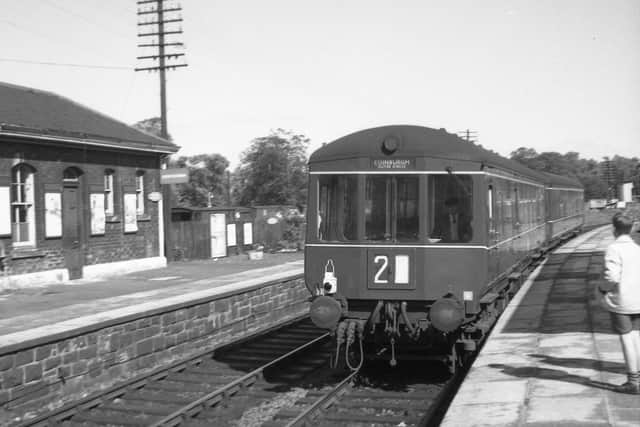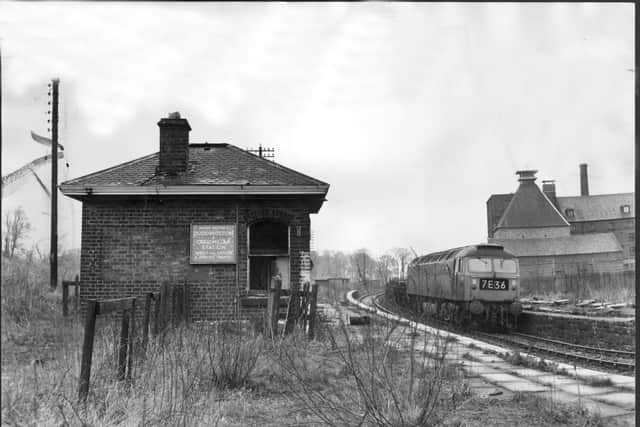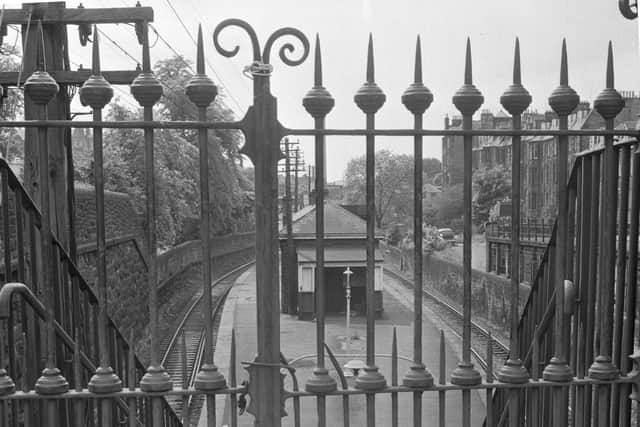Edinburgh's South Sub railway: Here's why forgotten railway closed 60 years ago today
and live on Freeview channel 276
Let us know what you think and join the conversation at the bottom of this article.
The line – which ran in a circle from Waverley through Haymarket to Gorgie, Craiglockhart, Morningside, Blackford Hill, Newington, Duddingston/Craigmillar, Portobello, Piershill and Abbeyhill – is now only used for freight and diverted services, but there have been repeated calls for it to be reopened and a feasibility study on its future is included in the public transport plan being prepared by the current council administration.
Now rail expert Robert Drysdale, who has been researching the history of the “South Sub”, has detailed the intriguing story of how one of Scotland’s better-used lines, whose full potential was never exploited, came to be closed.
Advertisement
Hide AdAdvertisement
Hide AdIn the 1960s the notorious Beeching report led to the mass closure of stations and railway lines across Britain – more than half of all stations were recommended for the axe and although protests led to some being saved, most closures went ahead.
But the South Sub was an early victim, long before the report was published. Mr Drysdale says passenger numbers across Scotland had increased after diesels replaced steam engines, which happened in 1958 in Edinburgh. The South Sub and Leith North lines were each carrying around 750,000 passengers annually.
"Everything changed when Dr Beeching took over as chairman of the British Transport Commission in June 1961 – nearly two years before publication of his report. Within days of taking office, he went to meet Scottish Region rail managers in Glasgow, and less than two months after that, the Scottish Area Board of British Railways was discussing a number of confidential rail closures to be taken forward ‘as soon as possible’ because of the ‘serious financial situation’."
The Scotsman broke the news on September 7, 1961 under the headline “Suburban Lines May Close”, mentioning the South Sub, Leith North and Peebles lines.


Advertisement
Hide AdAdvertisement
Hide AdThe Scottish Transport Users’ Consultative Committee – whose members from all over Scotland were appointed by the Minister of Transport – held a hearing on March 23, 1962, on the South Sub closure. And when it voted, there was a tie – eight votes for, eight against. The chairman, former Edinburgh Lord Provost John G Banks, gave his casting vote in favour of closure.
Mr Drysdale says Banks reflected a view common among politicians and others at the time. “These were the men who in the early 60s were dreaming of urban motorways, flyovers and underpasses. There was growing car ownership, people wanted the freedom of the car. Politicians didn't want to stand in their way.”
Another influential member of the committee was long-serving Colinton councillor Catherine Filsell. Mr Drysdale says: “She was a formidable woman, always very pro-British Railways and supported every closure. She was also chair of the corporation’s transport committee and her big headache was trying to make money for the buses because they were struggling to make a profit and her attitude was 'If there aren't any trains everyone is going to get the bus'.”
There was support for the line on the corporation though, led by Pilton councillor Magnus Williamson, who fought hard to save the city’s suburban railways.


Advertisement
Hide AdAdvertisement
Hide AdMr Drysdale says in its evidence to the committee, British Railways insisted that although staff costs amounted to around two-thirds of the running costs, no staff cuts could be made “because someone had to help ladies with prams up the station steps and someone had to turn out the lights – and guards couldn’t be expected to issue tickets because there were too many passengers to collect fares from”.
"Another tactic was to lump together the closure proposals for both the South Suburban and Rosewell services, with all statistics given for the total of both services rather than for each service separately. This disguised the fact that the average loading on a South Suburban train was 79 passengers but on Rosewell trains only 11 passengers, so the losses on the latter service were used to exaggerate the losses on the South Suburban.”
And he says British Railways failed to make the most of the South Sub’s potential. “The trains only ran at peak periods and at lunchtime. All the other lines had regular services throughout the day and into the evening. On the South Sub the last train was about 6.30pm. You couldn’t even go into town to the cinema on the train from Morningside.”
As a result, almost the only people using it during the week were commuters, though Mr Drysdale says on Saturday mornings, people might take the train from Morningside to the beach at Portobello.


Advertisement
Hide AdAdvertisement
Hide AdIn fact, 50 per cent of journeys on the South Sub in 1961 were suburb to suburb, such as Morningside to Portobello or Craigmillar to Gorgie, rather than suburb to city centre.
“The final decision to approve the closures had to be taken by Ernest Marples, the Conservative Minister of Transport in London. The Scottish Secretary, John Maclay, was given a chance to comment, and expressed strong misgivings, but Marples was not moved. The last trains ran on Saturday September 8, 1962, one year and one day after The Scotsman had first revealed the closure threat.
"Many other lines in Scotland were carrying far fewer passengers and making bigger losses but, for reasons which I have still not uncovered, priority was to be given to a wholesale purge of Edinburgh’s suburban services.”
Mr Drysdale believes the South Sub still has the potential to play an important part in an efficient city transport system, especially linking areas which are not linked by bus services. Well-known capacity problems between Haymarket and Waverley could be overcome by exploring the option of a “tram train”, already used in Sheffield, he says.
Advertisement
Hide AdAdvertisement
Hide Ad“If it was carrying 750,000 passengers in 1961 only running at peak hours, 60 years on, with the congestion we have and the journey times it could achieve – Morningide to Haymarket in eight or nine minutes – it could offer very welcome, fast inter-suburban connections.”
Comment Guidelines
National World encourages reader discussion on our stories. User feedback, insights and back-and-forth exchanges add a rich layer of context to reporting. Please review our Community Guidelines before commenting.